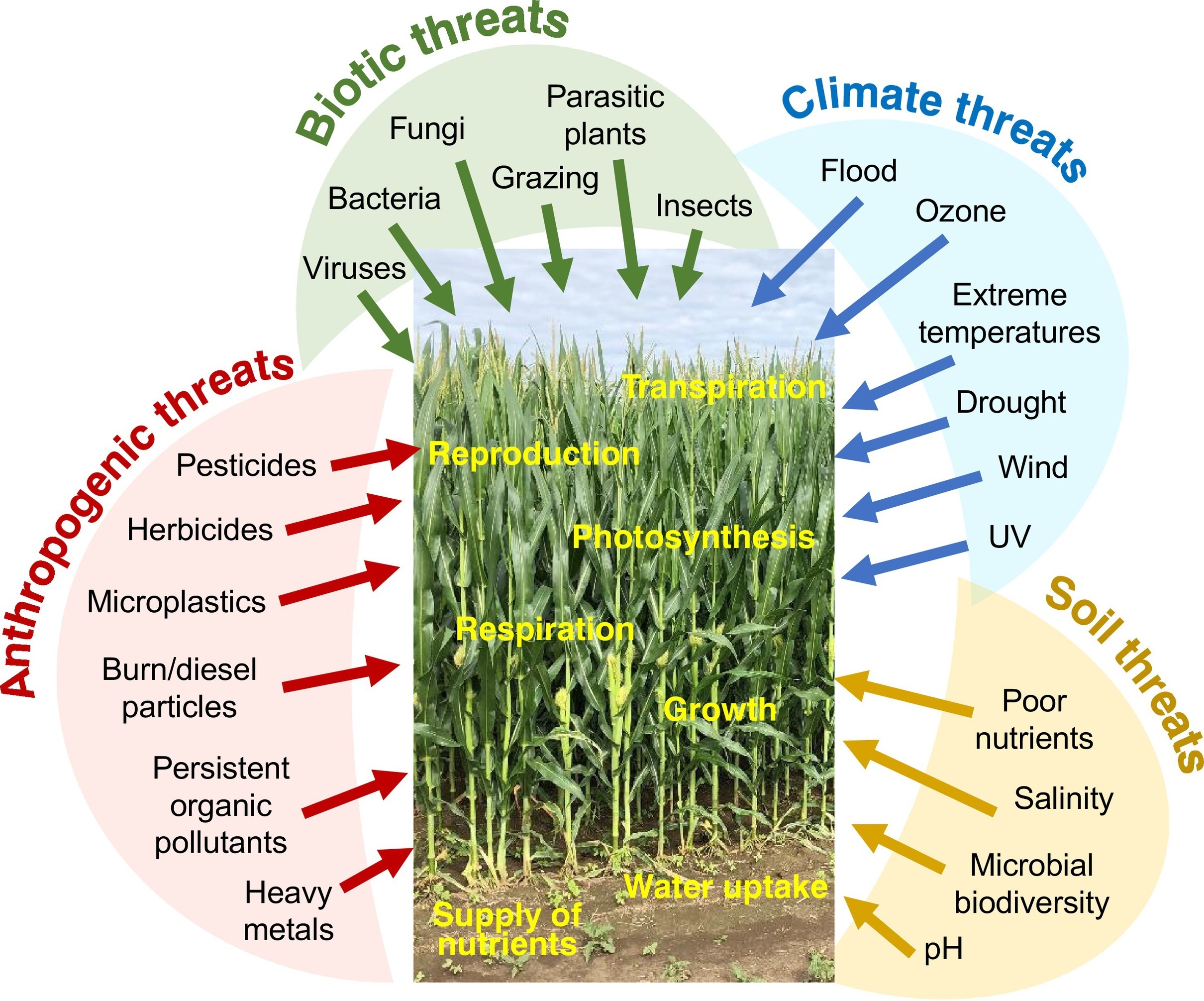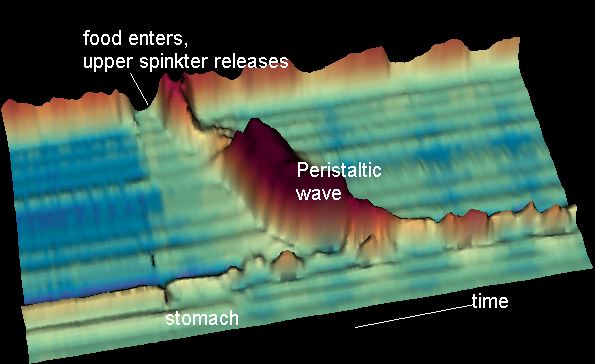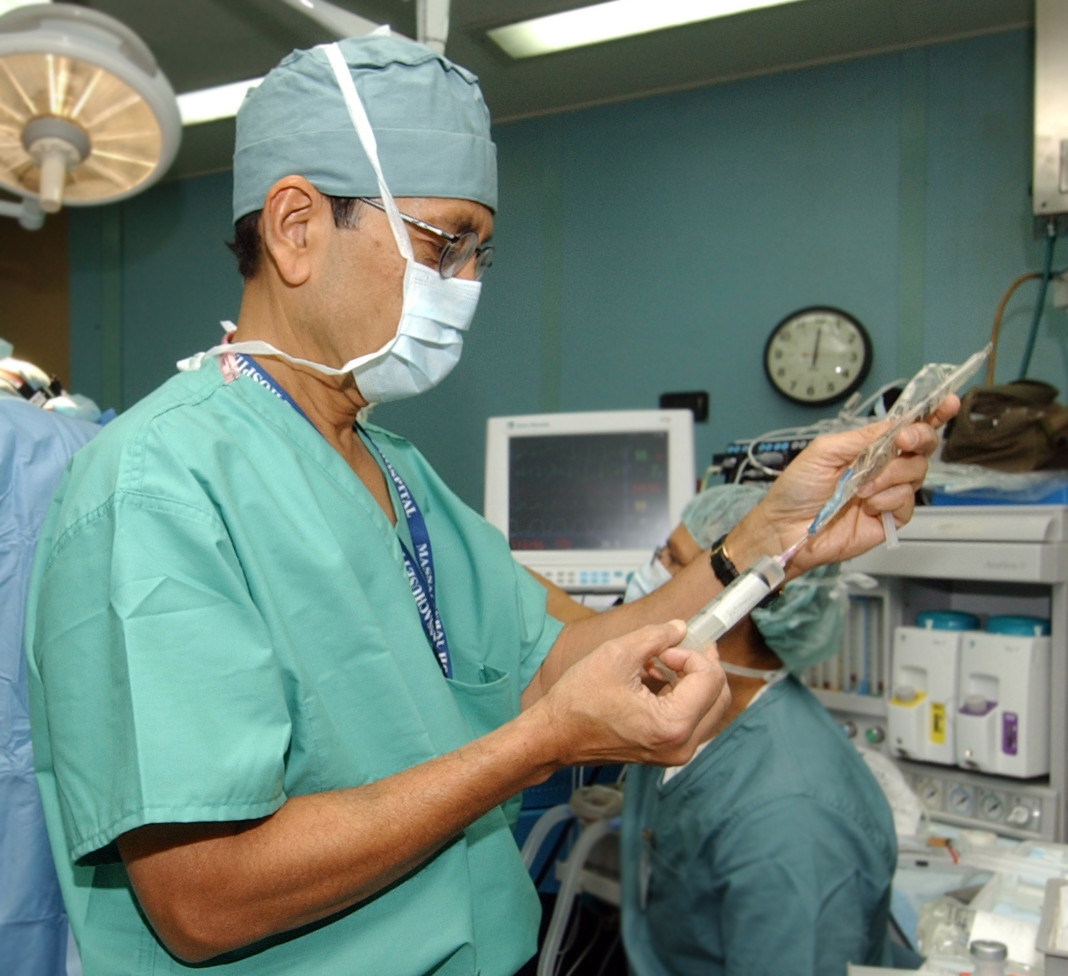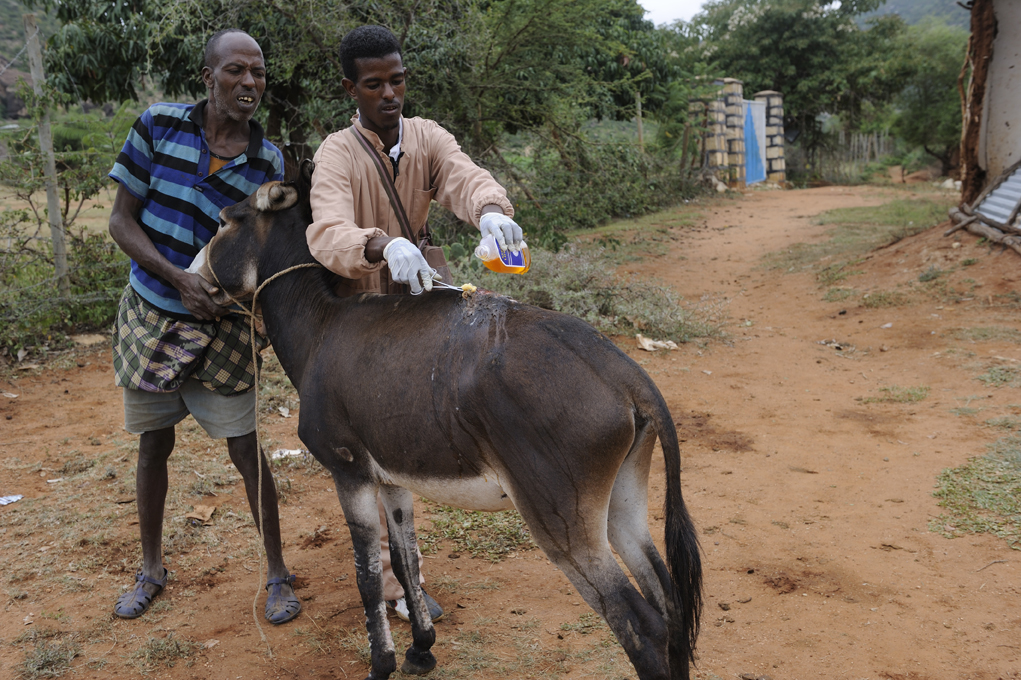|
Choke (horse)
Choke is a condition in horses in which the esophagus is blocked, usually by food material. Although the horse is still able to breathe, it is unable to swallow, and may become severely Dehydration, dehydrated. A secondary condition, aspiration pneumonia, may also develop if food material and saliva accumulate in the pharynx, spilling into the Vertebrate trachea, trachea and into the lungs. Choke is one of the "top 10" emergencies received by equine veterinarians. The condition is seen in other Equidae like mules and donkeys. Causes Chewing: Horses may develop choke if they do not chew their food properly. Therefore, horses with dental problems (e.g. acquired or congenital malocclusion, loose or missing teeth, or excessively sharp dental ridges) that do not allow them to completely grind their food are particularly at risk. In addition, horses that bolting (horse), bolt their feed and do not take the time to chew properly are more likely to suffer from choke. Dry Food: Dry foods ... [...More Info...] [...Related Items...] OR: [Wikipedia] [Google] [Baidu] [Amazon] |
Esophagus
The esophagus (American English), oesophagus (British English), or œsophagus (Œ, archaic spelling) (American and British English spelling differences#ae and oe, see spelling difference) all ; : ((o)e)(œ)sophagi or ((o)e)(œ)sophaguses), colloquially known also as the food pipe, food tube, or gullet, is an Organ (anatomy), organ in vertebrates through which food passes, aided by Peristalsis, peristaltic contractions, from the Human pharynx, pharynx to the stomach. The esophagus is a :wiktionary:fibromuscular, fibromuscular tube, about long in adults, that travels behind the trachea and human heart, heart, passes through the Thoracic diaphragm, diaphragm, and empties into the uppermost region of the stomach. During swallowing, the epiglottis tilts backwards to prevent food from going down the larynx and lungs. The word ''esophagus'' is from Ancient Greek οἰσοφάγος (oisophágos), from οἴσω (oísō), future form of φέρω (phérō, "I carry") + ἔφαγον ( ... [...More Info...] [...Related Items...] OR: [Wikipedia] [Google] [Baidu] [Amazon] |
Stress (medicine)
Stress, whether physiological, biological or psychological, is an organism's response to a stressor, such as an environmental condition or change in life circumstances. When stressed by stimuli that alter an organism's environment, multiple systems respond across the body. In humans and most mammals, the autonomic nervous system and hypothalamic-pituitary-adrenal (HPA) axis are the two major systems that respond to stress. Two well-known hormones that humans produce during stressful situations are adrenaline and cortisol. The sympathoadrenal medullary axis (SAM) may activate the fight-or-flight response through the sympathetic nervous system, which dedicates energy to more relevant bodily systems to acute adaptation to stress, while the parasympathetic nervous system returns the body to homeostasis. The second major physiological stress-response center, the HPA axis, regulates the release of cortisol, which influences many bodily functions, such as metabolic, psychologica ... [...More Info...] [...Related Items...] OR: [Wikipedia] [Google] [Baidu] [Amazon] |
Surgery
Surgery is a medical specialty that uses manual and instrumental techniques to diagnose or treat pathological conditions (e.g., trauma, disease, injury, malignancy), to alter bodily functions (e.g., malabsorption created by bariatric surgery such as gastric bypass), to reconstruct or alter aesthetics and appearance (cosmetic surgery), or to remove unwanted tissue (biology), tissues (body fat, glands, scars or skin tags) or foreign bodies. The act of performing surgery may be called a surgical procedure or surgical operation, or simply "surgery" or "operation". In this context, the verb "operate" means to perform surgery. The adjective surgical means pertaining to surgery; e.g. surgical instruments, operating theater, surgical facility or surgical nurse. Most surgical procedures are performed by a pair of operators: a surgeon who is the main operator performing the surgery, and a surgical assistant who provides in-procedure manual assistance during surgery. Modern surgical opera ... [...More Info...] [...Related Items...] OR: [Wikipedia] [Google] [Baidu] [Amazon] |
Lavage
In medicine, therapeutic irrigation or lavage ( or ) is cleaning or rinsing. Types Specific types include: * Antral lavage * Antiseptic lavage * Bronchoalveolar lavage * Whole lung lavage * Gastric lavage * Peritoneal lavage * Arthroscopic lavage * Ductal lavage * Nasal irrigation * Ear lavage * Pulsed lavage - delivery of an irrigant (usually normal saline) under direct pressure that is produced by an electrically powered device, useful in cleaning e.g. chronic wounds. See also * Douche * Ear picking * Enema * Hematopoietic stem cell transplantation * Life extension Life extension is the concept of extending the human lifespan, either modestly through improvements in medicine or dramatically by increasing the maximum lifespan beyond its generally-settled biological limit of around 125 years. Several resea ... * Regenerative medicine * Teeth cleaning References {{Medicine-stub Medical treatments ... [...More Info...] [...Related Items...] OR: [Wikipedia] [Google] [Baidu] [Amazon] |
Peristalsis
Peristalsis ( , ) is a type of intestinal motility, characterized by symmetry in biology#Radial symmetry, radially symmetrical contraction and relaxation of muscles that propagate in a wave down a tube, in an wikt:anterograde, anterograde direction. Peristalsis is progression of coordinated contraction of involuntary circular muscles, which is preceded by a simultaneous contraction of the longitudinal muscle and relaxation of the circular muscle in the lining of the gut. In much of a digestive tract, such as the human gastrointestinal tract, smooth muscle tissue contracts in sequence to produce a peristaltic wave, which propels a ball of food (called a bolus (digestion), bolus before being transformed into chyme in the stomach) along the tract. The peristaltic movement comprises relaxation of circular smooth muscles, then their contraction behind the chewed material to keep it from moving backward, then longitudinal contraction to push it forward. Earthworms use a similar mec ... [...More Info...] [...Related Items...] OR: [Wikipedia] [Google] [Baidu] [Amazon] |
Butylscopolamine
Hyoscine butylbromide, also known as scopolamine butylbromide and sold under the brandname Buscopan among others, is an anticholinergic medication used to treat abdominal pain, esophageal spasms, bladder spasms, biliary colic, and renal colic. It is also used to improve excessive respiratory secretions at the end of life. Hyoscine butylbromide can be taken by mouth, injection into a muscle, or into a vein. Side effects may include sleepiness, vision changes, dry mouth, rapid heart rate, triggering of glaucoma, and severe allergies. Sleepiness is uncommon. It is unclear if it is safe in pregnancy. It appears safe in breastfeeding. Greater care is recommended in those with heart problems. It is an anticholinergic agent, which does not have much effect on the brain. Hyoscine butylbromide was patented in 1950, and approved for medical use in 1951. It is on the World Health Organization's List of Essential Medicines. It is not available for human use in the United States ... [...More Info...] [...Related Items...] OR: [Wikipedia] [Google] [Baidu] [Amazon] |
Antispasmodic
An antispasmodic (synonym: spasmolytic) is a pharmaceutical drug or other agent that suppresses muscle spasms. Smooth muscle spasm One type of antispasmodics is used for smooth muscle relaxation, especially in tubular organs of the gastrointestinal tract. The effect is to prevent spasms of the stomach, intestine or urinary bladder. Both dicyclomine and hyoscyamine are antispasmodic due to their anticholinergic action. Both of these drugs have side effects common to anticholinergics and can worsen gastroesophageal reflux disease (GERD). Papaverine is an opium alkaloid used to treat visceral spasms, particularly those of the intestines. Mebeverine is a papaverine analog and spasmolytic with a strong and selective action on the smooth muscles of the gastrointestinal tract, particularly of the colon. Despite being anticholinergic, it does not have the systemic anticholinergic side effects seen in other such drugs. Peppermint oil has been traditionally used as an antispasmodic, and a r ... [...More Info...] [...Related Items...] OR: [Wikipedia] [Google] [Baidu] [Amazon] |
Sedation
Sedation is the reduction of irritability or agitation by administration of sedative drugs, generally to facilitate a medical procedure or diagnostic procedure. Examples of drugs which can be used for sedation include isoflurane, diethyl ether, propofol, etomidate, ketamine, pentobarbital, lorazepam and midazolam. Medical uses Sedation is typically used in minor surgical procedures such as endoscopy, vasectomy, or dentistry and for reconstructive surgery, some cosmetic surgeries, removal of wisdom teeth, or for high-anxiety patients. Sedation methods in dentistry include inhalation sedation (using nitrous oxide), oral sedation, and intravenous (IV) sedation. Inhalation sedation is also sometimes referred to as "relative analgesia". Sedation is also used extensively in the intensive care unit so that patients who are being mechanical ventilation, ventilated tolerate having an endotracheal tube in their vertebrate trachea, trachea. It can also be used during a long term brain EEG ... [...More Info...] [...Related Items...] OR: [Wikipedia] [Google] [Baidu] [Amazon] |
Veterinary Medicine
Veterinary medicine is the branch of medicine that deals with the prevention, management, medical diagnosis, diagnosis, and treatment of disease, disorder, and injury in non-human animals. The scope of veterinary medicine is wide, covering all animal species, both List of domesticated animals, domesticated and wildlife, wild, with a wide range of conditions that can affect different species. Veterinary medicine is widely practiced, both with and without professional supervision. Professional care is most often led by a veterinarian, veterinary physician (also known as a veterinarian, veterinary surgeon, or "vet"), but also by paraveterinary workers, such as veterinary nurses, veterinary technicians, and veterinary assistants. This can be augmented by other paraprofessionals with specific specialties, such as animal physiotherapy or dentistry, and species-relevant roles such as farriers. Veterinary science helps human health through the monitoring and control of Zoonosis, zoonoti ... [...More Info...] [...Related Items...] OR: [Wikipedia] [Google] [Baidu] [Amazon] |
Endoscopy
An endoscopy is a procedure used in medicine to look inside the body. The endoscopy procedure uses an endoscope to examine the interior of a hollow organ or cavity of the body. Unlike many other medical imaging techniques, endoscopes are inserted directly into the organ. There are many types of endoscopies. Depending on the site in the body and type of procedure, an endoscopy may be performed by a doctor or a surgeon. During the procedure, a patient may be fully conscious or anaesthesia, anaesthetised. Most often, the term ''endoscopy'' is used to refer to an examination of the upper part of the human gastrointestinal tract, gastrointestinal tract, known as an esophagogastroduodenoscopy. Similar instruments are called borescopes for nonmedical use. History Adolf Kussmaul was fascinated by sword swallowers who would insert a sword down their throat without gagging. This drew inspiration to insert a hollow tube for observation; the next problem to solve was how to shine light th ... [...More Info...] [...Related Items...] OR: [Wikipedia] [Google] [Baidu] [Amazon] |
Radiography
Radiography is an imaging technology, imaging technique using X-rays, gamma rays, or similar ionizing radiation and non-ionizing radiation to view the internal form of an object. Applications of radiography include medical ("diagnostic" radiography and "therapeutic radiography") and industrial radiography. Similar techniques are used in airport security, (where "body scanners" generally use backscatter X-ray). To create an image in conventional radiography, a beam of X-rays is produced by an X-ray generator and it is projected towards the object. A certain amount of the X-rays or other radiation are absorbed by the object, dependent on the object's density and structural composition. The X-rays that pass through the object are captured behind the object by a X-ray detector, detector (either photographic film or a digital detector). The generation of flat two-dimensional images by this technique is called Projection radiography, projectional radiography. In computed tomography (C ... [...More Info...] [...Related Items...] OR: [Wikipedia] [Google] [Baidu] [Amazon] |








